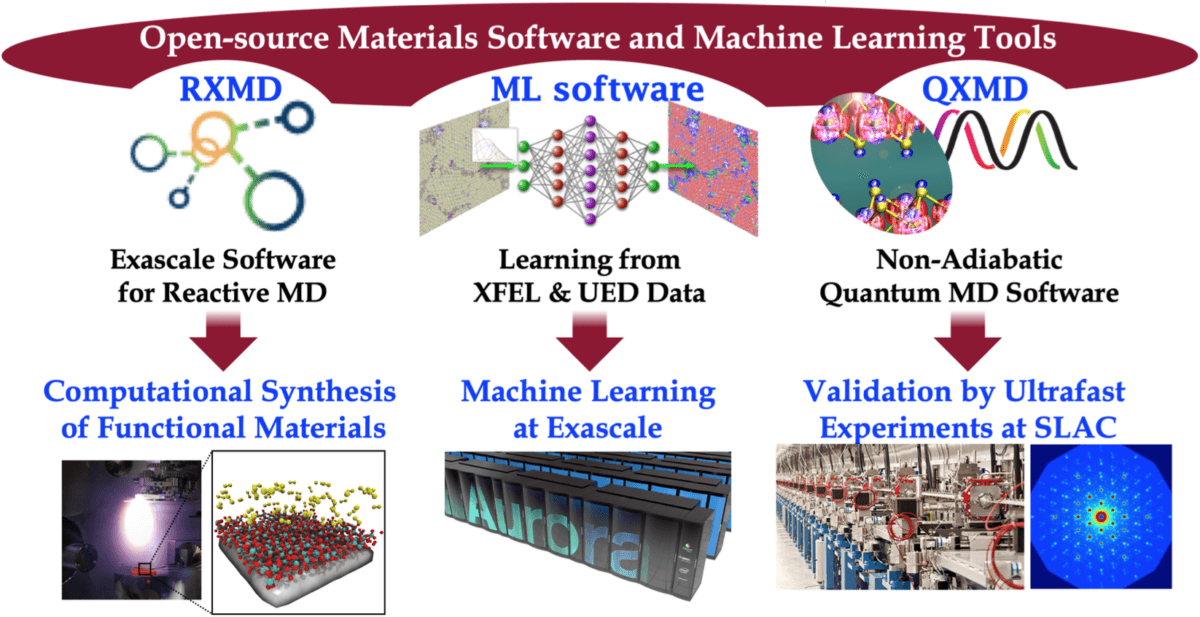MAGICS Software for Computational Synthesis and Characterization

The MAGICS software guides experimental synthesis and characterization of layered materials (LMs) in general and plays a particularly important role in the analysis of ultrafast X-ray laser and electron-diffraction experiments at Stanford's Linac Coherent Light Source (LCLS). (In the figure: iCVD–initiated chemical vapor deposition; API–application programming interface; MPI–message passing interface; OpenMP–open multi-processing; CUDA–compute unified device architecture.)
The MAGICS software stack consists of three layers:
- Scalable simulation engines on current and future computing platforms include nonadiabatic quantum molecular dynamics (NAQMD), reactive molecular dynamics (RMD) and accelerated molecular dynamics (AMD) simulation engines combine global scalability and local computational efficiency on a wide range of computing platforms.
- Core libraries, built on the simulation engines, focus on essential computational tasks that are common in many simulation scenarios.
- Extensible plugins, based on Python scripting language, are implemented by users to provide additional features beyond the core libraries.
MAGICS Software Stack
Scalable simulation engines
- QXMD: Adiabatic and nonadiabatic quantum molecular dynamics (QMD) simulation engine based on density functional theory (DFT) and time-dependent density functional theory (TDDFT).
- RXMD: Scalable parallel reactive molecular dynamics (RMD) simulation engine based on the reactive force-field (ReaxFF) approach.
Learning and Visualizations
- Materials Learning Sotware: Machine Learning for Defect Analysis in Materials Simulations
- GEARS: Game-engine-assisted research platform for scientific computing.
Extensible plugins
- Computational exfoliation plugins.
- Computational CVD plugins.
- Thermal-conductivity calculation plugins.

